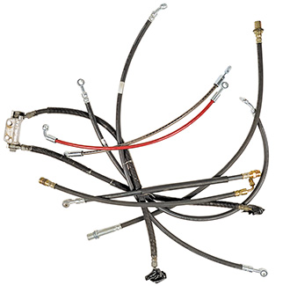 When it comes to automotive maintenance on older vehicles, the health of the various hoses and fuel lines is of vital importance to the efficiency and safety of your car or truck.
When it comes to automotive maintenance on older vehicles, the health of the various hoses and fuel lines is of vital importance to the efficiency and safety of your car or truck.
Fuel Vs. Brake Lines
Typically, fuel lines are made of reinforced rubber to prevent any splitting or kinking of the hose. Brake lines, on the other hand are typically made of double walled steel tubing. Both kinds of hoses experience wear and tear, just like any other piece on a car, and will periodically need to be replaced.
Replacement Vs. Repair
Although, it is technically possible to repair damaged lines and hoses it is never recommended. The various hoses and lines in your car help your car perform and operate at its highest efficiency. The hoses in your cooling system, for example, help keep your engine from overheating which can cause serious damage. The brake lines in your vehicle allow your brakes to function efficiently and swiftly. These systems are vital to the health of the vehicle and your safety while operating the vehicle, and so should always be replaced when worn.
Hose Maintenance
Most hose and line maintenance takes the form of vigilance. Your various brake and cooling lines should be checked twice a year, at the beginning of the summer and winter seasons. You can ask that your automotive service technician does this when when inspect your vehicle or change your oil, for instance. You can also manually feel for any breakage or flaking in your hoses if your suspect you have a problem.
Most importantly, your hose and lines should always be manufactured in compliance with federal standards and rated for compatibility with whatever fittings, adapters, and fluids you are using in your car. Brake hoses, of instance, are not one size fits all and you need to be sure you are using the right hose for your vehicle. Using high quality hoses and lines is your best defense against breakage.
Contact us for more information on automotive hoses and lines.